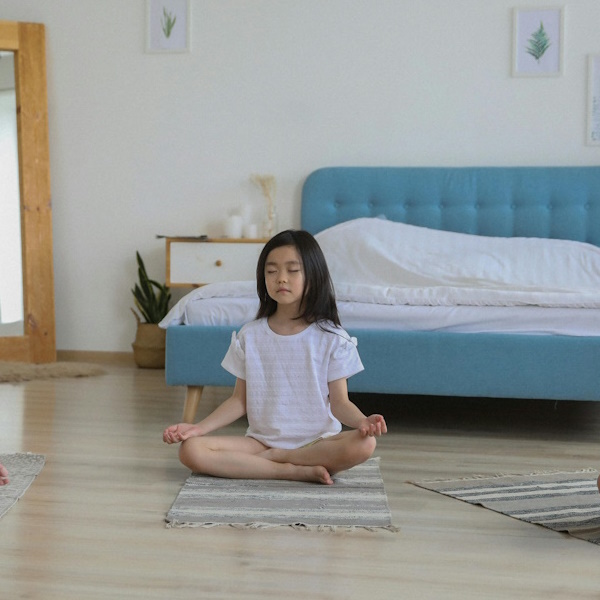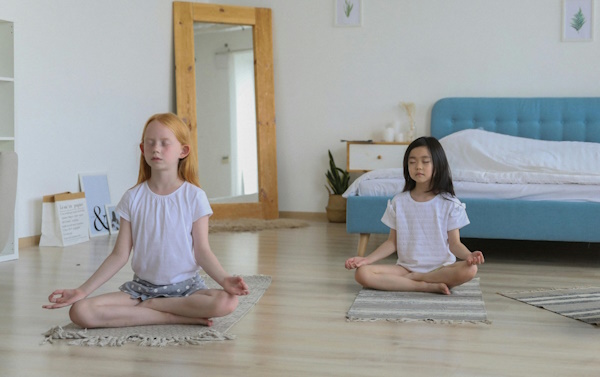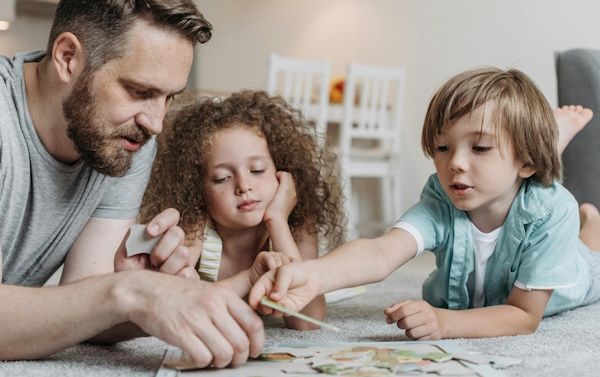Boosting Child Well-Being: Active Stress Relief for Kids
In today's fast-paced world, it's no surprise that kids feel the pressure too. From schoolwork to extracurricular activities, the demands can be overwhelming. But what if there was a fun, effective way to help your child unwind and manage stress? Enter the world of active stress relief for kids.
Active stress relief isn't just about burning off energy. It's about providing your child with tools to navigate their emotions, enhance their mood, and improve their overall well-being. Whether it's a family hike or a dance party in the living room, incorporating movement into your child's routine can make a big difference in their stress levels. Let's dive into how you can turn activity into your child's strongest ally against stress.
The Importance of Active Stress Relief for Kids
In today's fast-paced world, children are not immune to stress. With academic pressures, social dynamics, and a myriad of activities filling their daily schedules, finding effective ways to manage stress is crucial for their well-being. Active stress relief plays a pivotal role in this equation, offering both immediate and long-term benefits for children's physical and mental health.
Exercise, for instance, is more than just a means to burn energy. It's a powerful stress-reliever that boosts endorphins, which are the body's natural mood elevators. Incorporating activities such as family hikes, bike rides, or even spontaneous dance parties in the living room can significantly enhance a child's mood and reduce feelings of stress. The beauty of these activities is their dual benefit: they not only help in alleviating stress but also in strengthening the bond between family members.
Moreover, active stress relief strategies encourage the development of healthy coping mechanisms. By teaching kids the value of taking a break to engage in physical activity, you're setting them up with tools to manage their emotions and reactions to various stressors throughout life. This proactive approach to stress management can lead to improved focus in school, better sleep patterns, and a more positive outlook on life.
It’s also worth noting that the types of activities can be tailored to your child’s interests, ensuring they are engaged and motivated. Whether it’s a structured sport or free-form play, the objective is to move and have fun, which in itself is a powerful antidote to stress.
Active stress relief isn't just an adjunct to a child's routine; it's a critical component in nurturing resilient, happy, and healthy kids who are equipped to tackle challenges head-on. By embedding movement and physical activity into their daily lives, we can offer them a buffer against the pressures of modern life and a strong foundation for emotional and physical health.
Understanding the Effects of Stress on Children
When you're delving into the realm of active kids' stress relief, it's crucial to grasp how stress impacts your children. Stress isn't just an adult issue; kids face their unique challenges and pressures. From academic expectations to social dynamics, children today navigate a complex world that can significantly affect their mental and physical well-being.
Children manifest stress differently than adults, often through changes in behavior, such as increased irritability, changes in eating habits, or sleep disturbances. This stress can stem from several sources like school work, family dynamics, or even over-scheduling. Recognizing these signs early can help you intervene before stress takes a more serious toll.
Research underscores the stark reality of stress's impact on children. For instance, a study published in the Journal of Abnormal Child Psychology found that children dealing with stress are at a higher risk of developing emotional and behavioral problems. These issues can extend into their adult lives if not adequately addressed.
| Aspect | Effect |
|---|---|
| Academic Performance | Decrease in focus, lower grades |
| Social Interactions | Withdrawal from friends, increase in conflicts |
| Physical Health | Increased risk of illnesses, changes in appetite and sleep |
| Emotional Well-being | Anxiety, depression, irritability |
Understanding these effects underscores the importance of incorporating active stress relief strategies into your child's routine. Movement isn't just about physical health—it's a powerful tool for mental well-being. Engaging your child in activities like family hikes, bike rides, or even energetic dance parties can offer an effective outlet for stress, fostering a sense of joy and relaxation that might seem elusive during challenging times.
By acknowledging the impacts of stress on your child and taking proactive steps to counteract them through active engagement, you're setting the foundation for a healthier, happier lifestyle that prioritizes mental well-being alongside physical health.
How Physical Activity Can Help Manage Stress
Engaging in physical activity is more than just a way to burn off energy; it's a critical tool in managing stress for kids. When your child participates in physical activity, their body releases endorphins, often known as "feel-good" hormones. These natural mood lifters play a key role in reducing stress, enhancing overall mood, and even improving sleep quality.
Physical activities, whether structured like sports or unstructured like playtime, provide an outlet for stress relief that is both healthy and necessary. It's not just about the physical benefits; the psychological impact is substantial. Participating in a physical activity requires a certain level of focus and concentration, which helps divert your child's mind from stressful thoughts and situations. It acts as a form of mindfulness, keeping them present and engaged, away from the worries of the day.
- Boosts Mood: Physical activities increase the production of endorphins, improving your child’s mood.
- Improves Sleep: Regular activity can help regulate sleep patterns, a crucial factor in stress management.
- Enhances Focus: Engaging in sports or exercises improves concentration, helping your child stay focused in school.
Physical activity also offers an excellent opportunity for social interaction. Whether it's team sports, group rides, or dance classes, these activities allow children to connect with others, share experiences, and build friendships. Social support is vital for stress relief, providing a sense of belonging and reducing feelings of isolation.
Incorporating physical activities into your child's routine doesn’t have to be a chore. Simple changes, like walking or biking to school when possible, can make a significant difference. The key is to find activities that your child enjoys, allowing them to reap the benefits of physical activity while having fun. Remember, a stress-free child is a happy, healthy child.
Finding the Right Activities for Your Child
Identifying the perfect activities that will help your child manage stress through movement begins with understanding their interests and preferences. Just as each child is unique, the activities that will most effectively soothe and energize them vary greatly. Here's how you can start:
- Explore Various Options: From soccer and basketball to ballet and martial arts, the range of potential activities is vast. Encourage your child to try different sports or movement-based hobbies to see what they enjoy the most.
- Consider Their Personality: Does your child thrive in team environments, or do they prefer solo activities? Understanding whether your child enjoys social interaction during exercise can help you narrow down the options.
- Look for Accessibility: The best stress-relief activities are those that can be easily incorporated into your daily routine. Options like biking, playing catch in the backyard, or even engaging in interactive video games that encourage movement can be practical and fun.
- Focus on Fun: Ultimately, the goal is to reduce stress, not add to it. Choose activities that your child looks forward to, rather than ones that feel like a chore.
By engaging in physical activities that they genuinely enjoy, children can experience a natural boost in mood and a noticeable reduction in stress. Additionally, these activities offer the added benefit of improving physical health, which in turn, supports mental well-being.
Remember, the objective isn’t to turn your child into an Olympian but to foster a love for movement that keeps them happily active and significantly less stressed. Through a combination of trial and error and paying close attention to your child's feedback, you'll soon find a set of activities that fits seamlessly into their routine and life.
Tips for Incorporating Active Stress Relief into Your Child's Routine
Understanding the benefits of active stress relief is one thing, but integrating these activities into your child's daily life can sometimes seem daunting. However, with a few strategic moves, you can make active stress relief a seamless, enjoyable part of their routine.
Start by setting a good example. Children are great imitators, so when they see you engaging in physical activity and enjoying it, they're more likely to want to join in. This doesn't mean you have to train for a marathon but showing enthusiasm for a nightly family walk, or a weekend bike ride can go a long way.
Schedule regular activity breaks. Just like adults benefit from stepping away from their desks, kids need breaks from homework or screen time. These breaks are perfect opportunities for a quick game of catch, a dance-off, or even a few yoga poses together. The key is to be consistent and make these breaks a regular part of their day.
Incorporate activity into transportation. If possible, choose walking or biking over driving when heading to school or activities. This not only increases their daily physical activity but also teaches them the value of an active lifestyle as a practical choice.
Make it a group activity. Invite friends or family members to join in on the active fun. This adds a social element that children will love and often leads to a more enjoyable and engaging experience for them.
Lastly, remember that fun should be the focus. The moment an activity feels like a chore is the moment kids lose interest. Explore different activities to find what your child genuinely enjoys and don't be afraid to mix things up! Whether it's a nature hike, a game of tag, or an impromptu dance party, the goal is to ensure they associate movement with joy and fun, not obligation.
By adopting these strategies, you're not just helping your child manage stress; you're instilling lifelong habits for a healthier, happier lifestyle.
Conclusion
Embracing active stress relief is a powerful step toward ensuring your child's happiness and well-being. By incorporating fun and engaging physical activities into their daily routine, you're not only helping them shed the day's stress but also instilling in them healthy habits that will last a lifetime. Remember, it's about creating joyous memories while fostering resilience and mental strength. So, take the lead, explore activities that resonate with your child, and make stress relief an enjoyable part of your family's life. Together, you can navigate the challenges of today's world with confidence and a smile.







